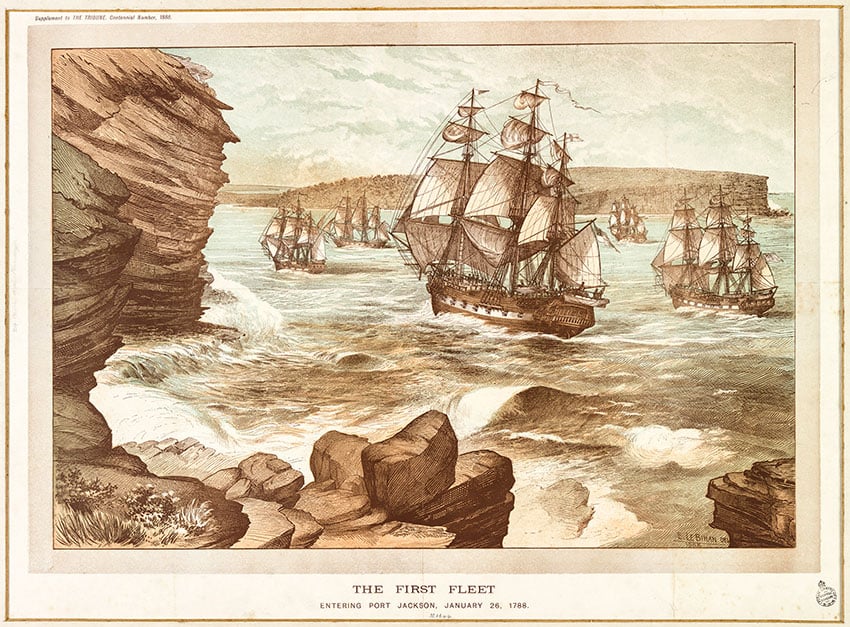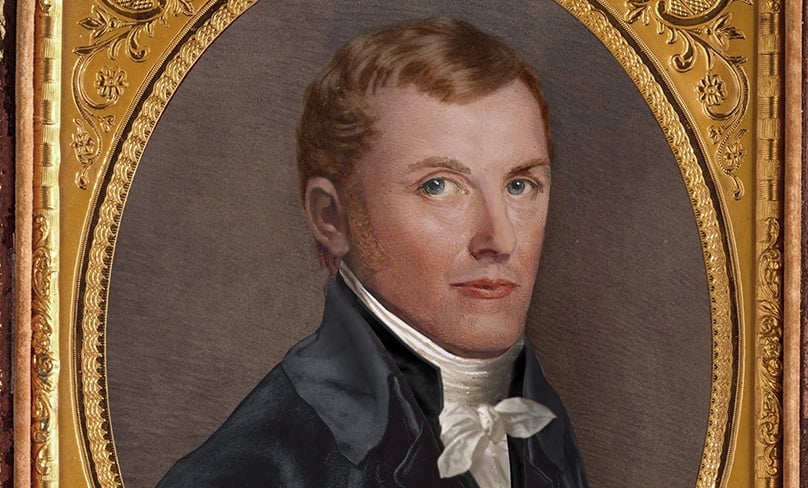
By Dr Damian John Gleeson
The traditional narrative of Australian Catholic history has credited Fr John Joseph Therry (1789-1864) with being the “founder of the Catholic Church in Australia.” Arriving from Cork, Ireland, with his nominal superior, Fr Philip Conolly in May 1820, Fr Therry was confronted with an unchurched Catholic population of about 5,000 people on the mainland, the overwhelming number being Irish-born convicts or emancipists. In the period between English colonisation in 1788 and 1820, the Catholic faith had been unable to flourish in penal NSW because of the dominance of the established church, the Church of England, and the absence of official Catholic chaplains to minister to the Irish population.
Fr Therry’s zealous care of convicts—regardless of religion—positions him as the leading and most influential clergyman of any denomination in NSW in the 1820s and 1830s. He had attended St Patrick’s Seminary at Carlow for only two and a half years, which may explain his less-than-complete theological formation and at times, inconsistent pastoral judgement. There is, however, no evidence that financial difficulties explain the “family embarrassment” that led to Fr Therry’s hurried ordination as a regular priest in April 1815. More likely the embarrassment pertained to other circumstances of his blended family.
Although time poor in his ministry work, Fr Therry and his clerks kept detailed financial records, including church subscriptions and land deals. The traditional argument that he was a poor businessman is not supported by a careful examination of his records: he displayed the characteristics of a financially-astute person, consistent with his forebears of Cork city. Most writers have downplayed his lax financial management and overlook that during his 44-year tenure in NSW and Van Diemen’s Land, Fr Therry frequently appeared in court matters concerning property disputes.Fr Therry died a wealthy man in 1864, thanks to numerous government grants and his de facto control of significant land and cash assets as a result of being the executor of hundreds of estates of successful Irish emancipists.
Repeatedly, emancipists’ relatives and their priests appealed to Fr Therry to co-operate in the distribution of estates. Alas, the priest refused to show them last wills and failed to reply to many letters from Ireland. Only in a few cases did he appear to uphold the terms of emancipists’ wills.
Despite leaving large tracts of land across many areas of Sydney and beyond, as well as numerous large bank balances, there is little evidence that Fr Therry sought this fortune for self-aggrandisement. Therry’s vision for the Catholic Church in NSW was for an Irish church with the Jesuit Fathers at the helm. Amongst his 20 wills and codicils, the Jesuits were Fr Therry’s largest beneficiary, which facilitated their establishment of educational endeavours, such as Riverview College. Similar to Fr Therry, however, the Jesuits did not always behave ethically, and they assumed ownership of land and sold properties that had been bequeathed to other parties, notably the Archdiocese of Sydney.
Alongside Fr Therry, early Catholic history has emphasised then contributions by two laymen, James Dempsey and William Davis. Their generous financial support to Catholicism is unquestioned, but serious questions remain, which in Davis’ case have been ignored by the Marists and the Sisters of Charity. Davis’ wealth largely accrued from the financial acumen of his wife, Catherine Miles, who Davis treated cruelly for many years until her death. Dempsey was very lucky not to be re-transported to NSW after complicit conduct with deviant ex-convicts in London in 1827. Dempsey’s return trip to County Wexford was equally marred by discontent. The Irish held long memories, and Dempsey’s murder of two people outside of the theatre of war 30 years earlier had not been forgotten by local communities. Upon his return to NSW in the early 1830s Dempsey quickly faded from the Catholic scene. The reputation of Cornelius Dempsey, his only son to migrate to NSW, was sorely damaged by skullduggery with Fr Therry in the administration of wills.
The extensive Therry Papers at the State Library of NSW identify numerous lay Catholics whose names have all-too-quickly been forgotten. William Cosgrove and John Toole were Therry’s loyal sextons at the first three Catholic chapels: Castlereagh Street, St Joseph’s, Hyde Park, Australia’s first consecrated Catholic Church, and St Mary’s. Roger Murphy and James Cassidy, tenaciously defended Therry when he was under attack. Bridget O’Sullivan (nee Dwyer) carefully preserved Therry’s correspondence for several decades. Patrick Garrigan provided important legal advice to Therry and his conscientious clerks included Thomas Ryan, Andrew Higgins, and Thomas Byrne, the “naturally born” son of the longest living 1798 rebel, Andrew Byrne. John and Mary Lacey were unofficial leaders of Parramatta’s Catholics in the early decades of the 19th century. Judge, Sir Roger Therry—likely a distant relative of Fr Therry—oscillated between Protestantism and Catholicism as political expediency dictated.

The extraordinary contribution by James Meehan, deputy surveyor general, has been largely overlooked in Catholic literature. Meehan’s vision paved the way for the Catholic Church to receive the large land grant at Hyde Park, which today is home to St Mary’s Cathedral. As one of Governor Macquarie’s most trusted advisers, Meehan secured valuable land grants for many of his countrymen in south-west Sydney, from Irish Town (now Bankstown) through to Campbelltown and Airds.
Colonial Catholicism also flourished from generous donations for churches and graveyards, such as from James Burke (Campbelltown), Michael Ryan (Ryansdale, Spring Field), another Michael Ryan (Bungonia), Patrick Carolan (Burragorang), and James Doyle (Windsor).
Assumptions have been made about colonial marriage and sectarianism. The tense relations between Catholic and Protestant leaders at official levels did not interrupt many convicts of different religions freely intermarrying without major ructions. Some 40 per cent of Catholic rite marriages in Sydney in the 1820s and 1830s were mixed. Many other Catholic women married in Protestant ceremonies. The dominant myth that Irish convicts shunned marriage in Protestant churches, before or after Therry’s presence, pertains at best to a small number of nationalistic Irish. The net effect in terms of colonial society was a relative harmonising of relations between Catholics and Protestants in the period before 1850, a theme missing in the literature.
Bigamous marriage remains largely unexamined in early NSW history. Successive colonial governors promoted convict marriage as a means of reducing unofficial cohabitation and increasing the colony’s general moral fibre. Prior to Governor Darling’s revised marriage regulations in 1825, many Catholic convicts – with spouses in Ireland – remarried without officials or clergymen being able to check on prior marriages. Fr Therry intervened in high profile bigamous marriages, but his disregard for official decisions meant that he too often married couples in haste, some of whom had concurrent marriages. Similarly, he ignored colonial instructions to desist in religious conversions and converted influential colonists, such as Major George Druitt (Mount Druitt) and William Mitchell (Bungonia).
Deeply troubled by discrimination against his countrymen in Ireland, Fr Therry championed Catholicism in penal NSW. But an antipathy to officialism—state and church—reflected the behaviour of an unreconstructed recalcitrant. His Robbin Hood style of ministry benefited many but was underpinned by unethical conduct.
Dr Damian John Gleeson is the Australian Religious History Fellow, State Library of New South Wales and author of a new history of the Irish in NSW to be published in 2024.
